Professional Stump Grinding Service: Costs, Process & When To Hire
Stump grinding is an essential yard care service that removes troublesome tree stumps from your property. When that old oak finally gives up the ghost, or you decide it’s time for some landscaping upgrades, you’re often left with an unsightly stump to contend with. Removing these stumps by hand is back-breaking work, so calling in the professionals is highly recommended.
But what exactly does a professional stump grinding service entail? Below we’ll explore everything you need to know, from costs and process to tips for selecting the best stump removal company. Let’s dig in!
Why Remove a Tree Stump?
Before we get into the nitty gritty details of stump grinding, it helps to review why removing them is so important in the first place:
- Prevent Regrowth: Tree stumps left unattended have a high chance of re-sprouting. These new shoots can turn into nuisance trees.
- Open Up Space: Clearing a stump leaves usable space for landscaping projects, gardens, play areas, sheds, and more.
- Improve Appearance: Tree stumps are unsightly tripping hazards that detract from your property’s curb appeal. Removing them instantly upgrades your yard’s look.
- Eliminate Hazards: Old stumps can attract pests like termites and carpenter ants. They also pose tripping hazards for passersby.
Clearly it’s in your best interest to remove tree stumps. But how exactly is this service performed?
The Stump Grinding Process Step-by-Step
Stump grinding, also known as stump cutting, is the most common method companies use to remove stubborn old stumps from residential and commercial properties. It is faster and more affordable than extracting the entire stump.
Here is a simplified overview of what the stump grinding process looks like:
1. Visual Inspection
The first thing a professional grinding service will do is visually inspect the stump to assess the situation. Important factors include:
- Stump size/diameter
- Extent of visible roots
- Rotted or solid wood
- Surrounding landscaping obstacles
This info helps the company develop a removal plan and provide an accurate quote.
2. Clearing Space & Protection
Before grinding can begin, the area around the stump gets cleared of debris that could interfere. Sprinkler heads, plants, and other landscaping may also need protective covers.
3. Surface Root Removal
Surface roots around the stump get chopped with an axe or chainsaw. This allows the grinder to access the main stump without damaging blades on above-ground roots.
4. Stump Grinding
Here’s where the magic happens! Specialized grinders are used to chip away the stump and roots incrementally, one layer at a time. Everything gets shredded into mulch or disposed of accordingly.
5. Backfill & Cleanup
Once grinding is complete, some services will backfill the hole with topsoil and replace surrounding vegetation that was removed. Cleanup crews will ensure the area looks as good as new.
And voila! Stump disappeared.
Types of Stump Grinders & Methods
From tractor-powered PTO grinders to highly-maneuverable walk-behind models, stump cutters come in many shapes and sizes. The most common residential stump grinder types include:
- Walk-Behind Grinders: These compact and nimble grinders can access tight spaces and easily pass through gate openings. Their small size makes transporting them to jobsites easy. Walk-behind units excell at removing stumps up to about 18 inches diameter.
- Tow-Behind Grinders: Also known as trailer-mounted grinders, these medium-sized units offer expanded grinding capacity for larger stumps thanks to beefier engines and cutting wheels. Transportation requires a truck or SUV.
- Tractor-Mounted Grinders: The most heavyweight option. Tractor PTO-powered grinders make fast work of huge stumps thanks to high torque and hefty cutter wheel sizes exceeding 25 inches. Larger price tags make them most suitable for major clearings.
The grinding method may vary slightly between machine types, but all rely on abrasive disks or Wheels studded with carbide teeth to systematically pulverize the wood fibers into chips. The spinning actions of the cutter wheel paired with side-to-side sweeping motions make short work of even the most stubborn roots.
Key Factors That Influence Stump Grinding Cost
Like most contracting jobs, many variables factor into pricing for professional stump grinding services. Expect to pay anywhere from $100 all the way up to $700+ per stump depending on the following:
- Stump Diameter – Bigger stumps equal bigger grinding time and equipment requirements. Diameter is the #1 cost driver.
- Number of Stumps – Multi-stump projects typically enjoy discounted bulk rates. lone stumps cost more per unit to make travel worthwhile.
- Accessibility – Stumps in remote corners with obstacles like walls and fences raise the difficulty and grind time. Easy access equals cheaper removal.
- Root Depth & Size – Major root systems add more wood volume to grind through which takes more resources. Expect higher pricing for deep roots.
- Disposal Needs – Some sites require hauling away debris which adds labor and dump fees. On-site mulching costs less.
- Additional Services – Stump site cleanup, filling holes with topsoil and new landscaping raise the job price tag. Basic grinding only is cheaper.
Reputable companies should provide free estimates based on your unique stump characteristics. Beware of vague flat rates that sound too good to be true.
Questions to Ask Your Stump Grinding Contractor
Choosing the best stump removal company ensures a smooth grinding process and top-notch results. Ask prospective hires these important questions:
- Do you carry all required licenses and insurance?
- What safety gear and precautions will you use?
- How will you protect surrounding landscaping during removal?
- What equipment do you use? Can it handle my stump size?
- Do you provide upfront estimates at no cost?
- How long have you been in the stump grinding business?
- Can I see some past worksites you’ve cleared?
- Do you offer any warranties or guarantees with service?
- What is your typical turnaround time from request to completion?
Reputable pros should have no issues responding thoroughly and transparently.
When Should Stump Grinding Be Avoided?
While stump grinders make fast work of most unwanted wood stumps, there are certain situations where grinding is not recommended:
- Utility Right of Ways – Never attempt to grind stumps yourself where underground gas lines or electric wires are present. Hire pros.
- Ivy-Covered Stumps – English ivy vines dull grinding teeth quickly. Remove all ivy first.
- Wet Stump Sites – Avoid operating grinders in soggy, muddy conditions to prevent getting stuck. Allow sites to dry first.
- Extremely Large Stumps – Monster stumps wider than 4 feet may require a backhoe or loader removal instead of grinding.
- Inaccessible Terrain – Steep slopes and densely wooded sites inaccessible to grinders call for alternative removal methods.
In some cases patience pays off. Waiting 3-6 months for stumps to decompose more before grinding means faster, cheaper removal.
DIY Stump Grinding – Is It Realistic?
It’s understandable to balk at the typical $200 – $300 per stump grinding bill and wonder, “How hard could this be to DIY?” Before attempting to rent your own grinder, carefully consider these downsides:
- High daily rental fees can eclipse contractor prices
- Operating grinders safely requires experience and skill
- Efficient grinding technique won’t be intuitive at first
- Lots of labor intensive repositioning is required
- Without proper gear, debris flies everywhere making huge mess
For most homeowners lacking the necessary equipment experience, DIY stump grinding proves to be more hassle than it’s worth. However an easy DIY grinding alternative does exist – chemical stump removers.
DIY Chemical Stump Removers
For those determined to remove stumps without contracting grinding services, applying chemical decomposing agents is easiest for beginners. Popular options include:
Stump Out Chemical Stump Remover
- Active Ingredient: Potassium Nitrate
- Application Method: Drill holes + pour / spray granules
- Cost: $$
- Pros: No mixing or tools required
- Cons: Slower decomposition times
Tree Stump Removal Chemical Kits
- Active Ingredients: Potassium Nitrate + Sodium Hydroxide
- Application Method: Mix with water + pour into holes
- Cost: $
- Pros: Faster decay process
- Cons: Must mix chemical formula
Whichever product used, follow manufacturer safety directions closely when applying. Wear gloves, eye protection, etc.
Chemical treatments take several months to decompose stumps completely, so patience is required. But they decompose remains right in the ground without grinding mess.
Key Takeaways: What To Know About Stump Grinding
Let’s recap the key things covered about professional stump grinding services:
- Stump removal opens up usable space while improving appearance and safety
- Grinding uses specialized machines to shred stumps/roots into tiny chips or mulch
- Expect to pay $100 – $700+ per stump depending on size and site factors
- Check contractor qualifications thoroughly before hiring
- DIY grinding is challenging; chemical removers are easier for beginners
Don’t let leftover tree stumps become a headache or eyesore any longer. Call a trusted professional stump grinding service to reclaim your yard today!
Frequently Asked Questions About Stump Grinding Services
Here are answers to some of the most common questions homeowners have about tree stump removal services:
Q: How much does grinding a tree stump typically cost?
Most homeowners pay between $100 – $350 per average-sized stump (up to 18″ diameter) when hiring professional grinding removal. Larger stumps exceeding 24″ diameter range closer to $500+. Get free estimates.
Q: Should all of the stump get ground below grade?
Ideally, yes – the entirety of the stump and major roots should be ground 12+ inches below grade. This prevents regrowth while allowing you to plant grass or landscaping over the area.
Q: How long does grinding take per stump?
Expect a typical professional grinding service to spend 30 minutes up to 2 hours grinding down an average 12-18 inch wide oak or pine stump. Larger stumps take exponentially longer.
Q: What can you do with the wood chips, mulch and debris?
Instead of hauling stump grinding leftovers away, many homeowners choose to reuse this nitrogen-rich “mulch” as organic material around plants in gardens. It’s free!
Q: Is it cheaper to just remove the stump with a backhoe?
Removing entire intact stumps with an excavator definitely disturbs more yard space in the process. Also, stump disposal fees quickly add up, making grinding more economical overall in most cases.
Q: Should I wait to grind newly cut down stumps?
Yes, delaying grinding for several months allows newly cut stumps time to dry out completely which reduces the amount of wood volume for grinders to chip through.
Q: How soon after stumps are ground can I plant grass or landscaping?
It’s best to wait approximately one growing season before attempting to establish new sod or plants in freshly ground spaces. This allows settling time and fertility rebuilding through rainfall.
Q: How long do tree stump grinding services take to complete?
While the actual stump grinding only takes 30 minutes to a few hours per stump, expect the entire job process from inspection to cleanup to take approximately 1-3 days in total.
Further Reading Other Relevant Posts:
Tree Removal vs. Stump Grinding: Which Do You Really Need?
Stump Removal Done Right: DIY vs. Pro Grinding Guide
What Happens to Roots After Stump Grinding?
Everything Homeowners Need to Know Before Removing Tree Stumps

